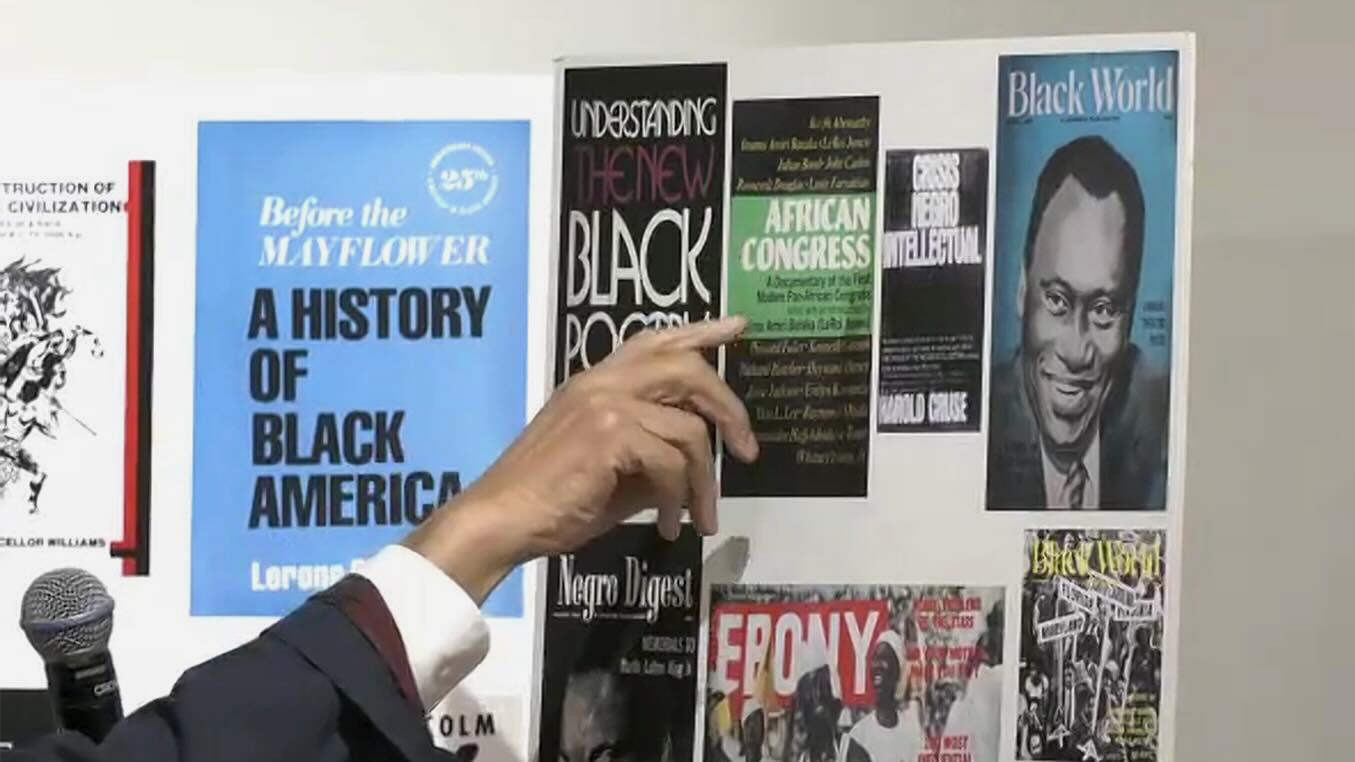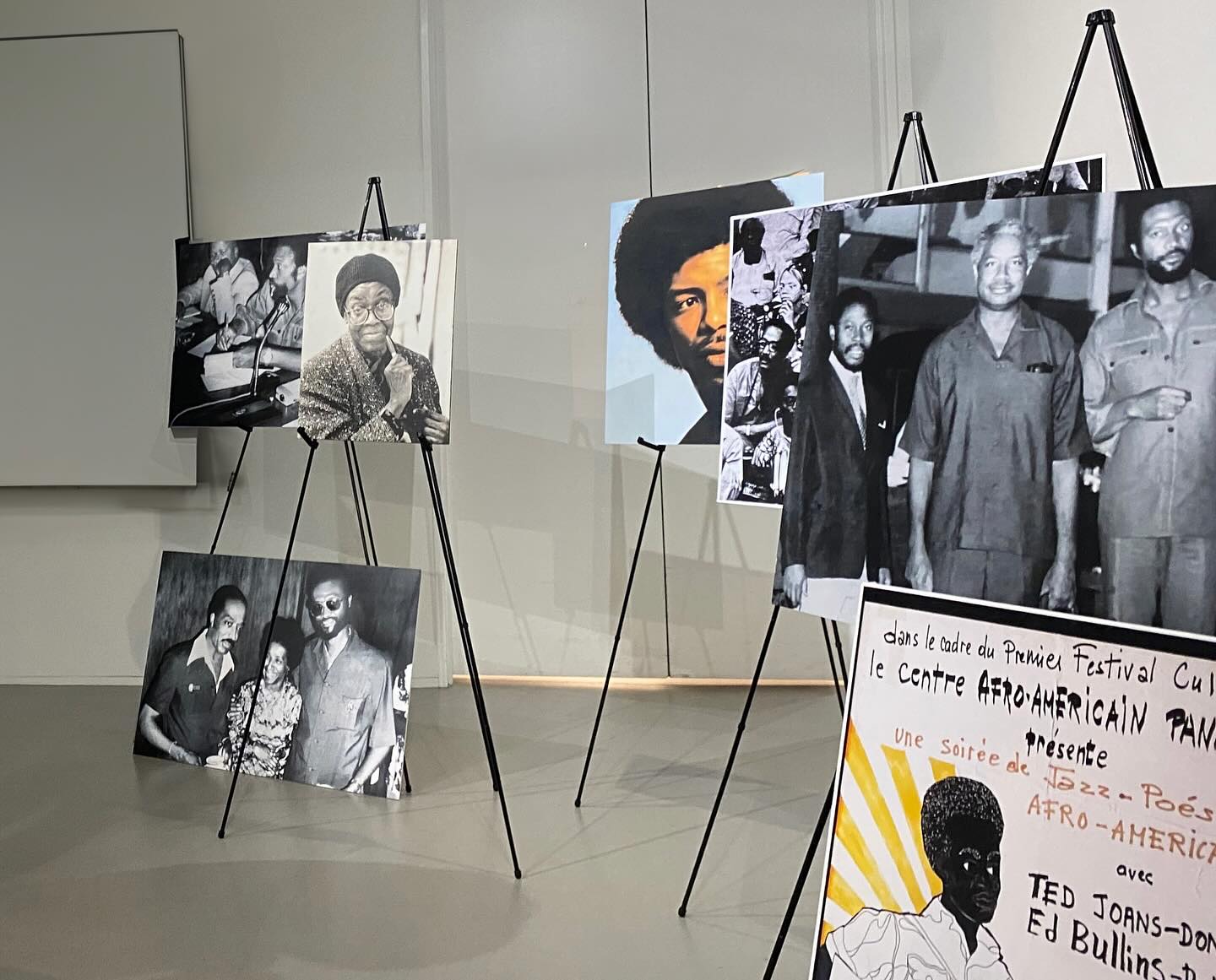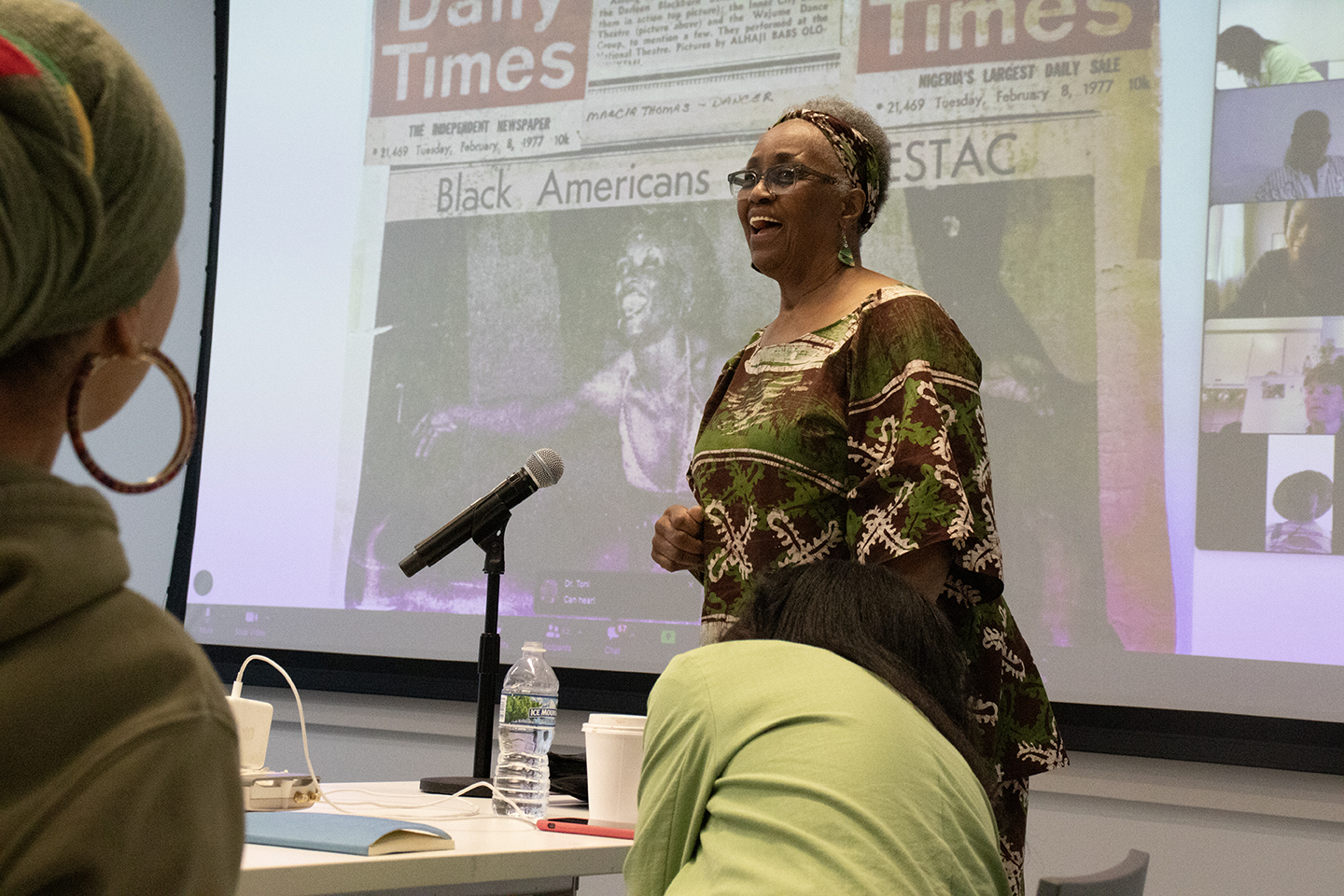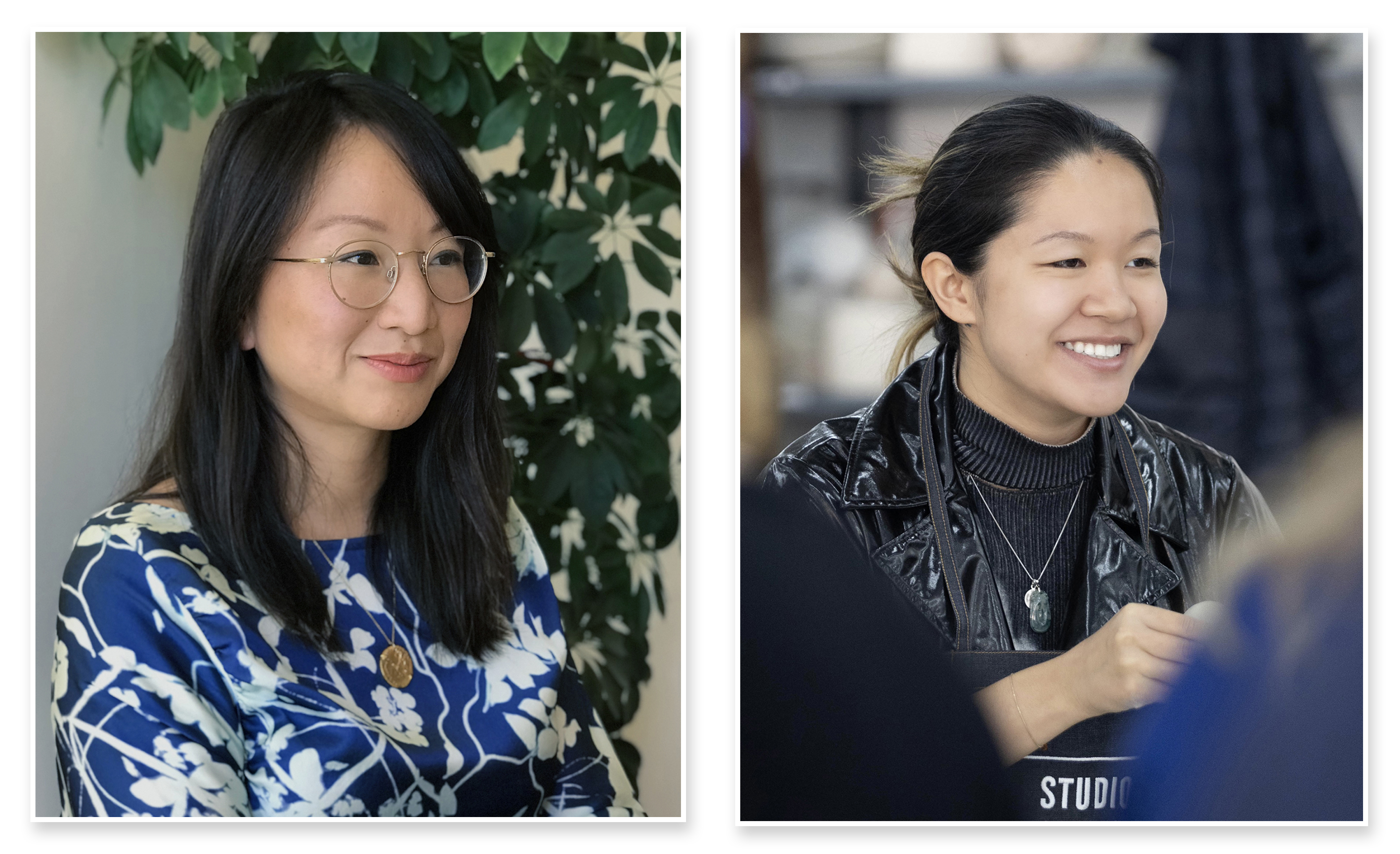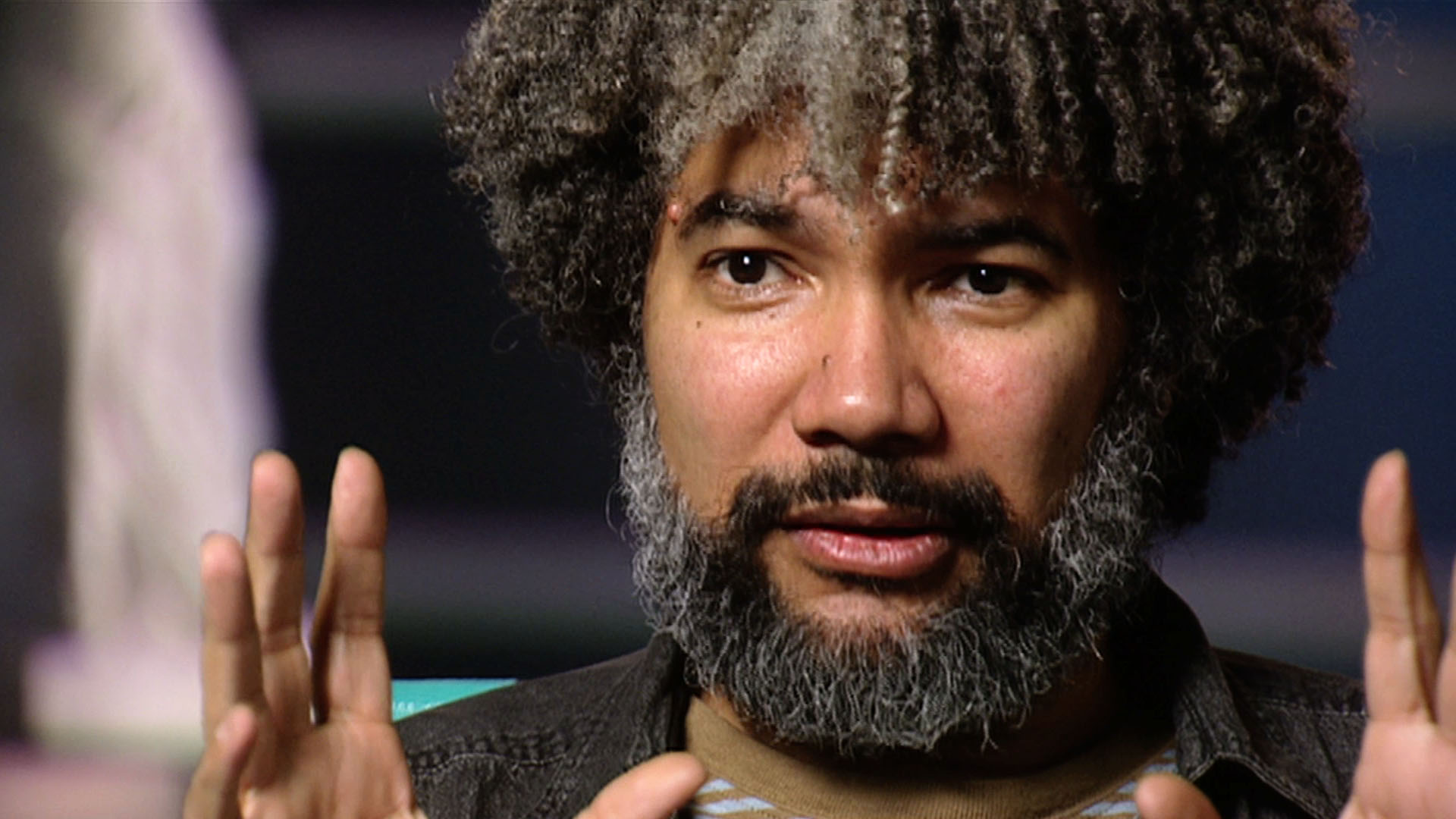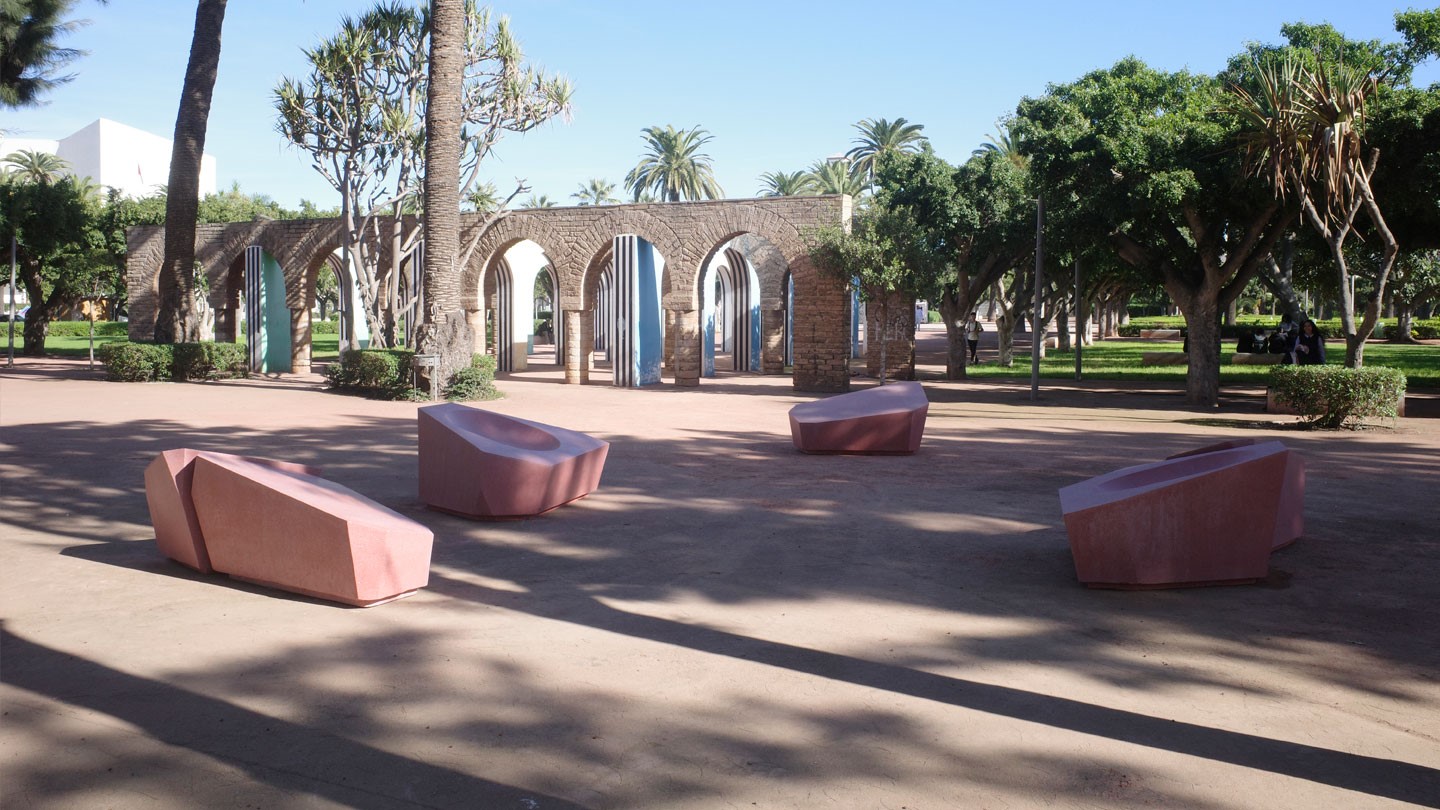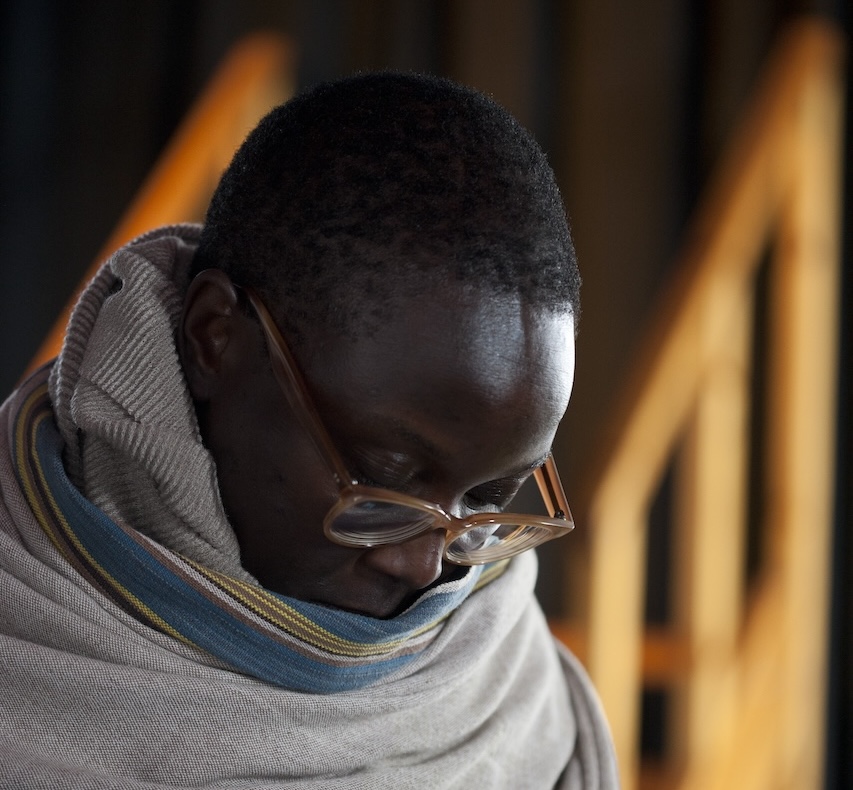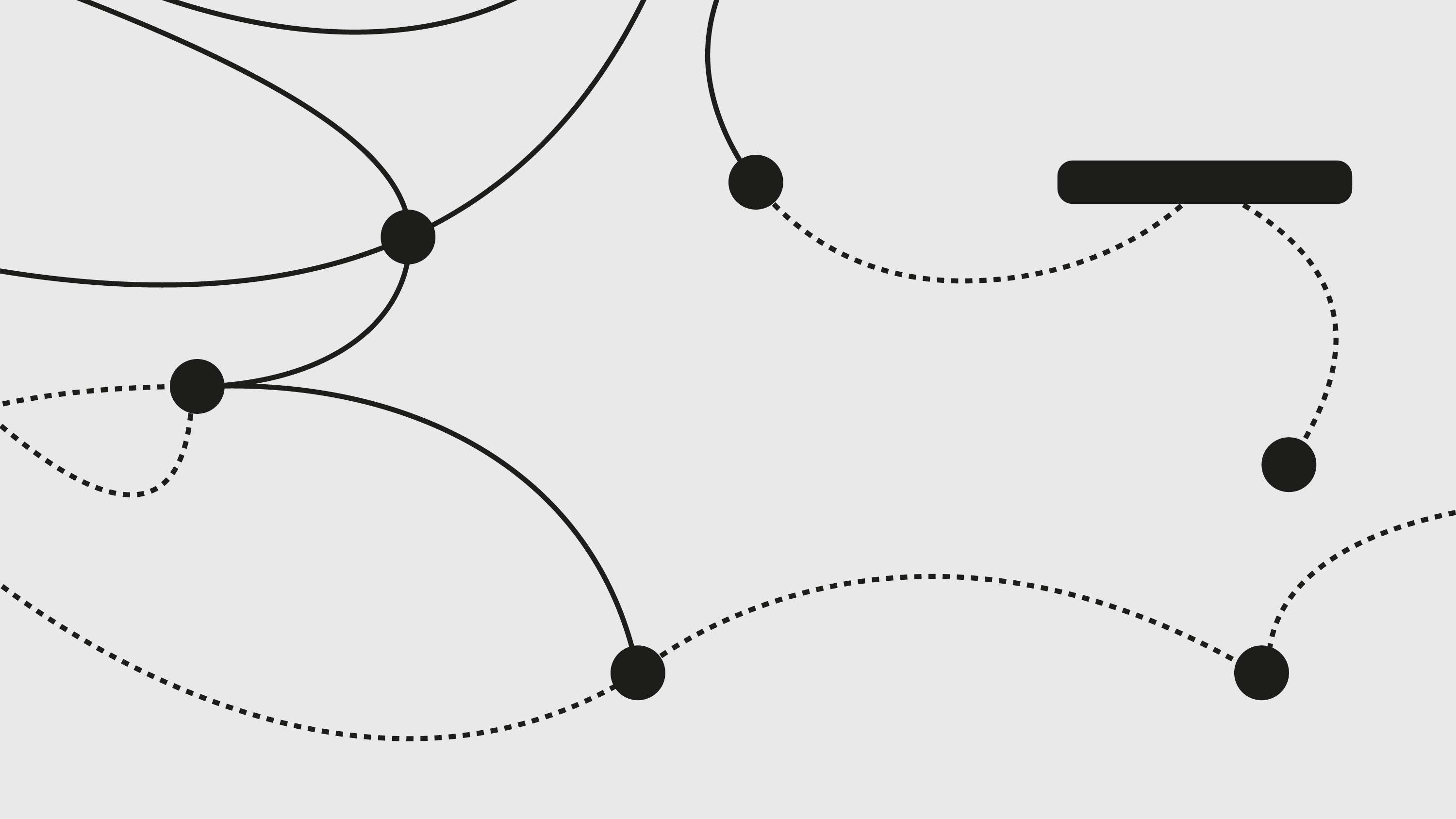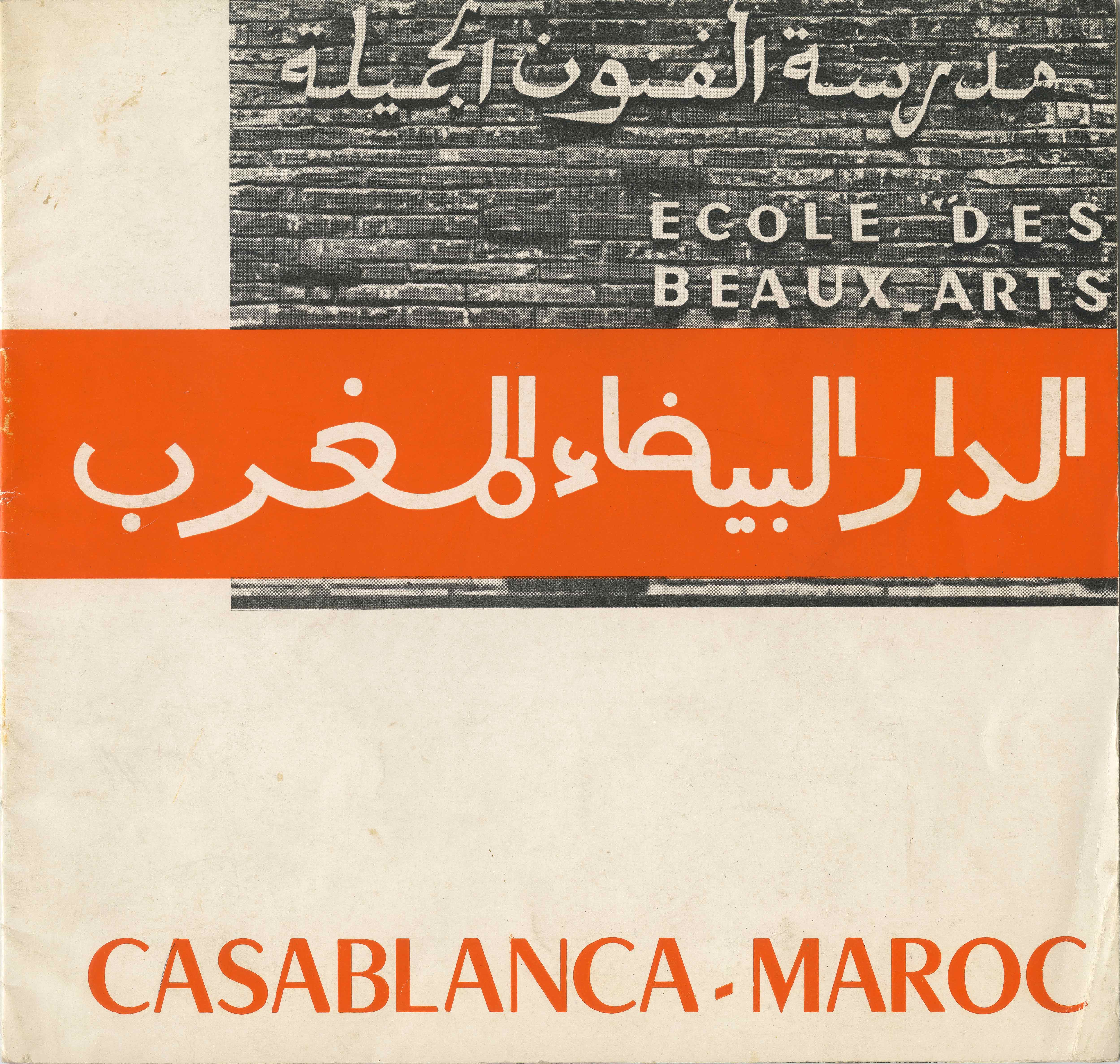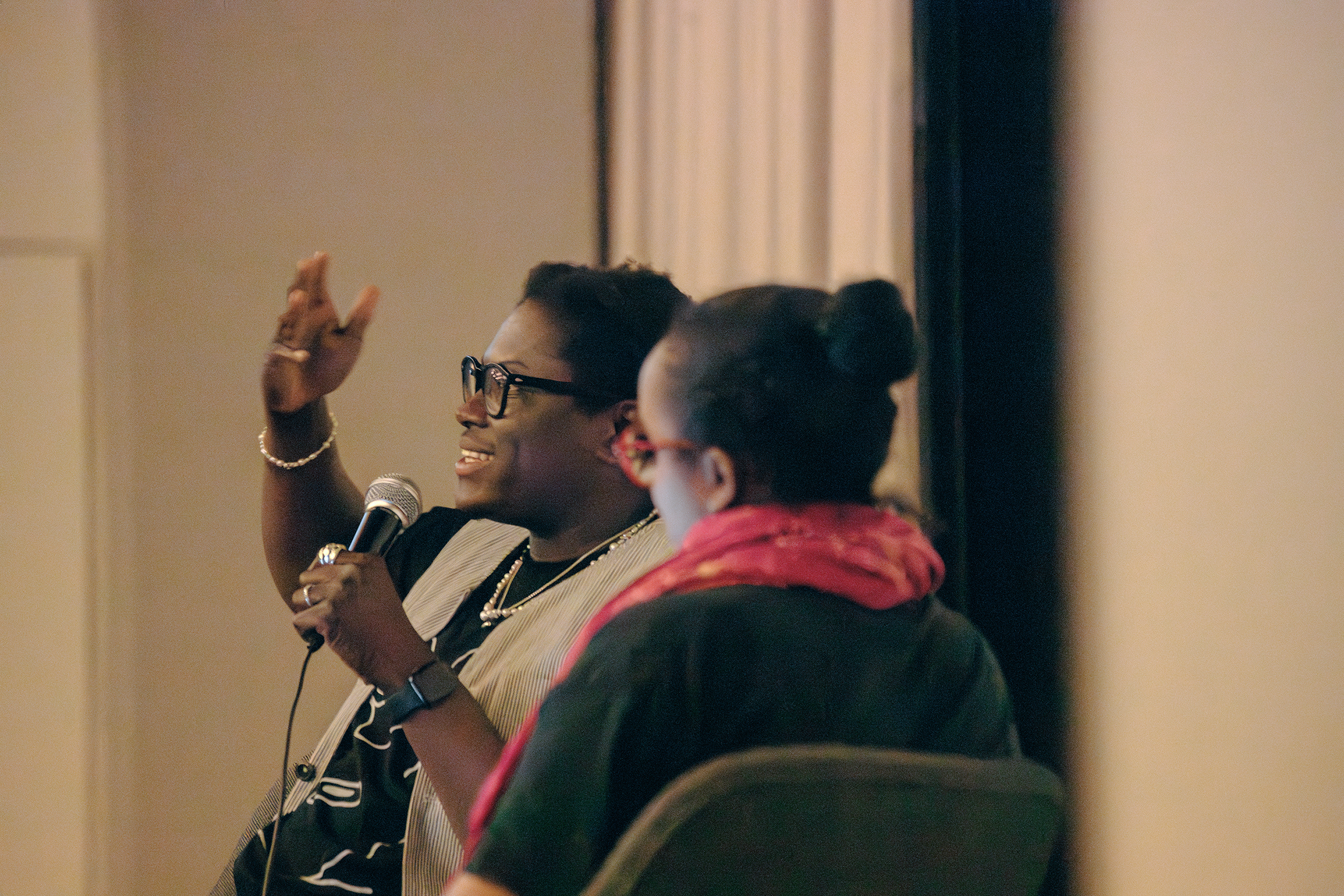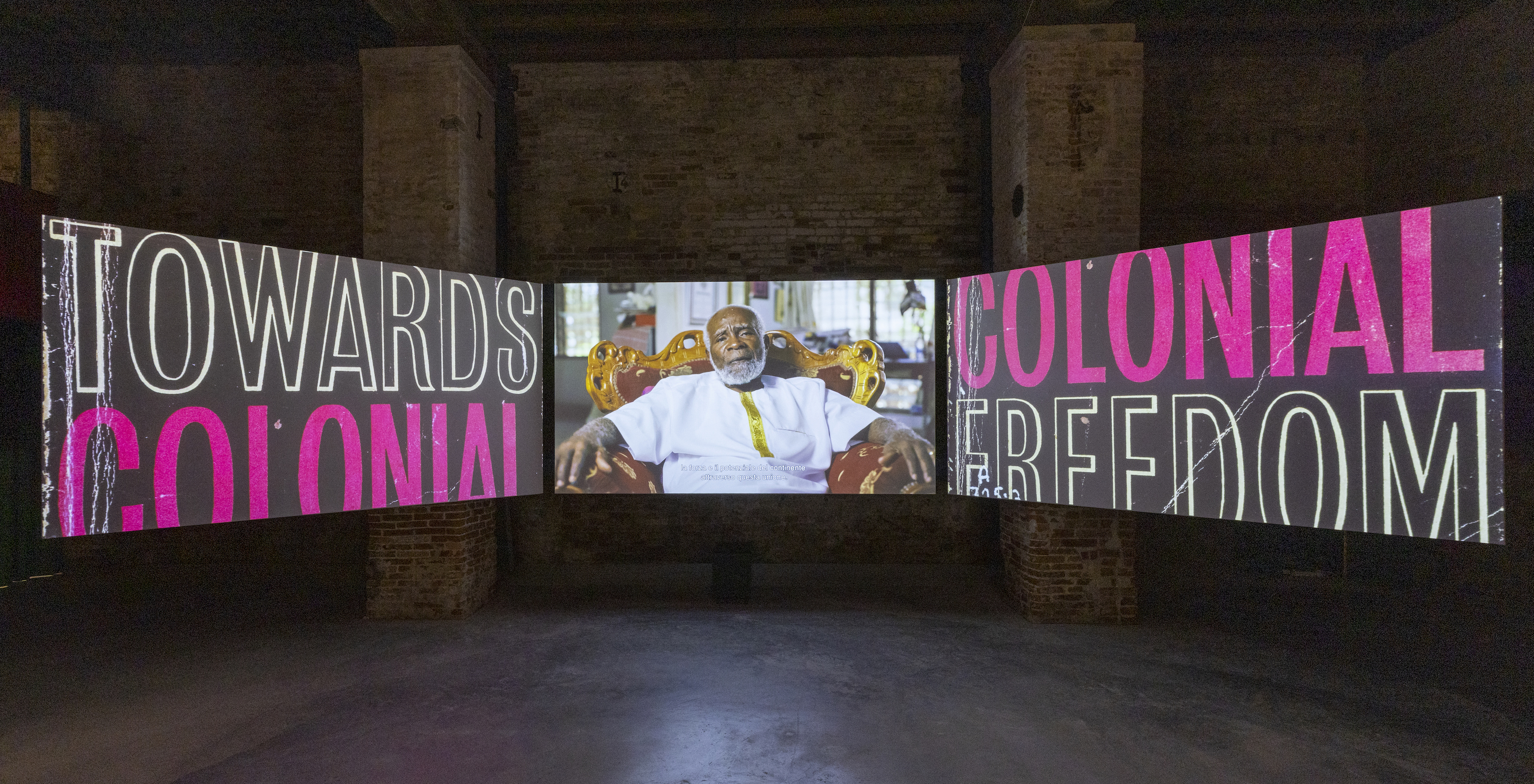https://thenewartschoolmodality.com/
Within art history circles, there’s been a recent resurgence of interest in 1977’s Second World Black and African Festival of Arts and Culture—better known as FESTAC ’77. Convened in Lagos, Nigeria, this was more than just a celebration of culture within Africa and its diaspora. The spectacular international event—which newly oil-rich Nigeria shelled out roughly $400 million to produce—was a return to origins for those displaced from the continent, and a ground for exchanging shared cultural values between Black and African people. 16,000 people from over 50 countries across Africa and its diaspora flocked to the brand-new National Theatre, Nigeria, including many prominent artists, musicians, activists, and thinkers, such as Sun Ra, Stevie Wonder, Miriam Makeba, Amiri Baraka, Faith Ringgold, Audre Lorde, and Jeff Donaldson. In 2019, a hefty book, co-published by the Pan-African platform Chimurenga and Afterall Books, assembled essays and archival material pertaining to the festival, its participants, and the local and global conditions that catalyzed it. Then, in 2022, the Brooklyn-based photographer Marilyn Nance published Last Days of Lagos, showcasing hundreds of the photographs she took while serving as an official photographer for the festival’s North American delegation.
This past fall, the New Art School Modality (NASM), a roving alternative art school, dedicated its first session to conserving FESTAC’s history via first-hand retellings from creative practitioners about their experiences at the festival. Founded by Romi Crawford, an art historian and professor at the School of the Art Institute of Chicago, NASM’s fall term invited choreographer Darlene Blackburn, artists Gerald Williams, K. Kofi Moyo, Dindga McCannon, and Roy Lewis, and writers Abdul Alkalimat, Ntone Edjabe, and Haki Madhubuti to gather with students at the Museum of Contemporary Art Chicago to revisit the creative flame that fueled FESTAC almost fifty years ago.

Roy Lewis, FESTAC Participants Line Up Behind Their Country Name in Stadium on Open Day, 1977. © Roy Lewis. Courtesy of GRAY Chicago/New York.
Many of these artists were also active during the Chicago Black Arts Movement in the 1960s and ’70s, a cultural renaissance that was closely aligned with the Black Panther Party’s revolutionary politics and radical education programs. Within these movements, learning was informal, free, and seen as a powerful vehicle for liberation. Crawford has resurrected this ethos, and it serves as NASM’s pedagogical foundation; the school is free and fugitive, and designated as a refuge from the financial, racial, and cultural barriers that are endemic to traditional academic programs. NASM works against the crippling currency of credit and debt, instead offering a hybrid learning environment that yields roaming artistic projects.
“For me, the measures around success have been about who’s in the room and the compelling things [that] they are doing,” Crawford said in a phone interview. Her ways of thinking originate from her upbringing in Chicago, where she was raised in a creatively vibrant household vitalized by the Black Arts Movement’s celebratory spirit and Pan-Africanist solidarity. “I knew from this setting that what Black cultural life had to offer epistemologically was fascinating and worthy of attention,” she continues. In the past five years, Crawford—the daughter of photographer Bob Crawford, who attended and documented FESTAC ’77—has produced several projects on the Black Arts Movement, including Fleeting Monuments for the Wall of Respect, a captivating book that asked contemporary artists to create impermanent works paying homage to the destroyed 1976 Wall of Respect mural in Southside Chicago. She has also organized two exhibitions, “So be It! Ase!” and “K. Kofi Moyo and FESTAC ’77,” which excavated the visual documentation of FESTAC by Black American photographers.
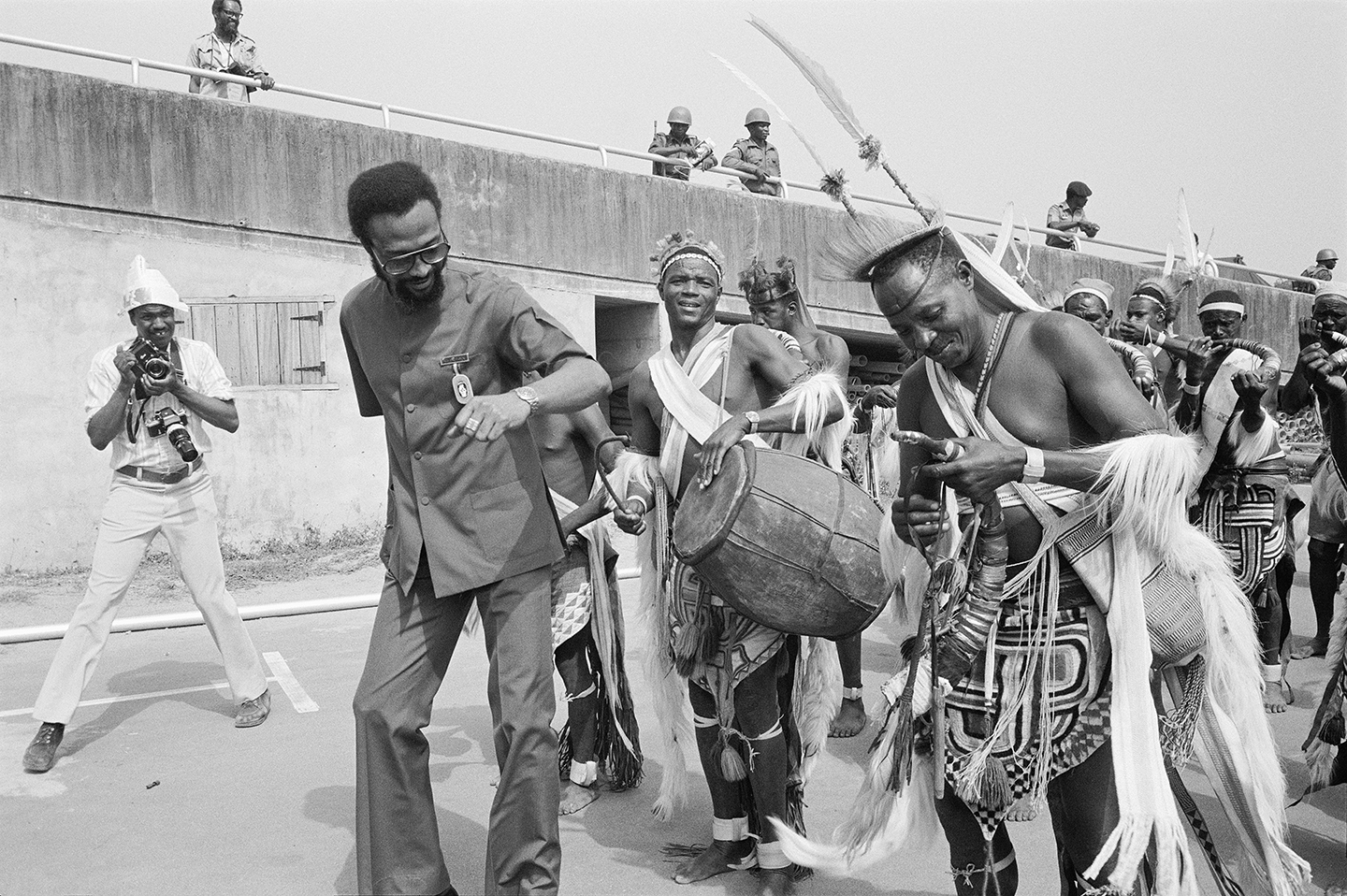
Bob Crawford, Untitled (Jeff Donaldson at FESTAC 1977), 1977. © Bob Crawford. Courtesy of GRAY Chicago/New York.
The student coalition that assembled at the Museum of Contemporary Art Chicago for NASM’s inaugural session hailed from the US, Brazil, Rwanda, Croatia, Mauritius, and France, among other countries. They were joined by distinguished contemporary scholars in Black thought, including Andrew Apter, Mackda Ghebremariam Tesfau’, Stefano Harney, and Fred Moten. The fall 2023 term culminated in a project included in the 2024 Lagos Biennial, which took place this past February in Tafawa Balewa Square, the historic host site for FESTAC ’77. “Refuge” was the biennial’s theme this year, an idea its curators took up to examine the festival’s legacy and to “reassess the promises, disappointments, and ongoing ramifications of the nation-state model.”[footnote See →.]
Refuge evokes fugitivity, or the act of escaping captivity and forming new ways of living and surviving against the tyranny of capitalism and colonialism. Within Black cultural thought, the concept of fugitivity, as it relates to Blackness and the university, has been a subject of extended inquiry for Fred Moten and Stefano Harney. In their book The Undercommons: Fugitive Planning and Black Study, the duo brings to light a strategy for undoing and unmaking the university, which they deem a place that disciplines subjects to produce laboring professionals. They turn their attention to the undercommons, an amorphous community and place “where the work gets done, where the work gets subverted, where the revolution is still black, still strong.”[footnote Harney and Moten, The Undercommons (Minor Compositions, 2013), 26.] NASM situates itself squarely within the undercommons. Between 2021 and 2023, I participated in the Black Arts Movement School Modality, NASM’s precursor. The forms of learning that we engaged in—movement sessions led by Darlene Blackburn, and music composition and improvisation sessions led by composer Roscoe Mitchell of the Art Ensemble of Chicago—solidified how the notion of the undercommons is being put into action.
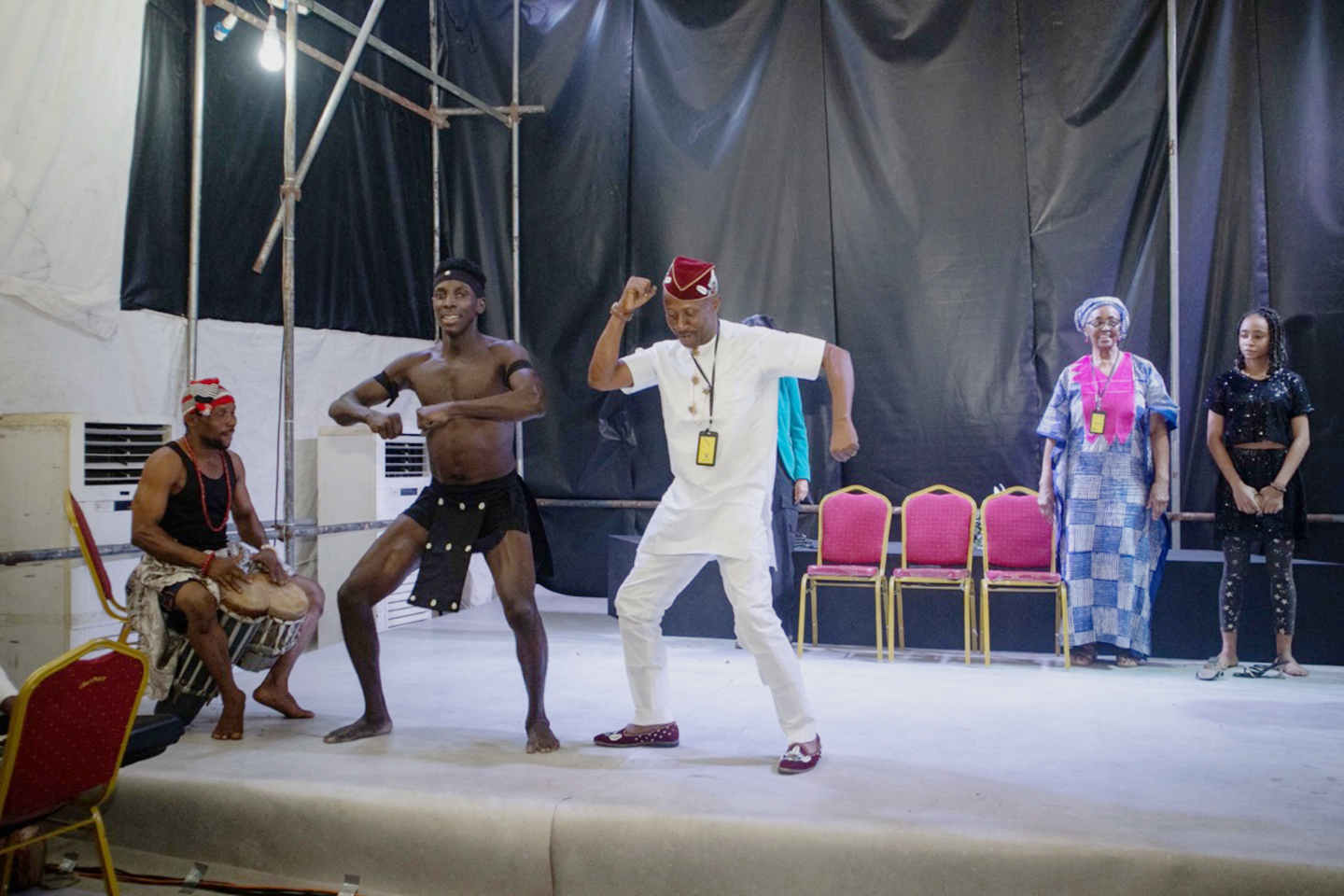
From “Africa to America,” choreographed by Darlene Blackburn for Festac’77, 1977. Performed by dance students from the University of Calabar as part of the New Art School Modality at Lagos Biennial 2024. Courtesy of the Lagos Biennial.
In last autumn’s ten-week module, choreographer Darlene Blackburn reflected on how she became a part of FESTAC ’77. “In Chicago, dance groups auditioned at the Malcolm X College. I put together a group, and we got a standing ovation at FESTAC,” she explained over the phone. Her trip to Lagos was organized by the late AfriCobra painter Jeff Donaldson, who spearheaded the North American Committee for FESTAC ’77. Blackburn returned to Chicago after her performance, and the following year, she was recruited by the Consulate General of Nigeria to form a dance group for the newly established University of Calabar, where she then taught choreography for actors in plays. Blackburn returned to Lagos this February for the biennial, where she witnessed University of Calabar students re-enact her FESTAC ’77 performance From Africa to America for the first time since its debut.
Also exhibited at the biennial was a broadsheet illustrating contributions from NASM faculty members and projects from its students. NASM participant Ryan Tenney, a Kansas City–based farmer and multimedia artist, grew a gourd that he then transformed into a technological vessel that holds sound, video, and other media from the course. From the United States to Nigeria, Tenney carried the apparatus around in a tote bag, emulating the fugitivity of NASM and the undercommons. Anyone could upload and download data from the gourd remotely. Tenney’s archive harkens back to ecological knowledge and the traditions of Afro-diasporic communities. “Seeds offer access to genetic algorithms of planetary inhabitation,” he explained in an email. “Ancestral memory contained in seeds is an (epi)genetic archive that can be activated, edited, or experienced. The traditional practice of placing a seed in one’s mouth in a planting ritual is the present moment of activation.”
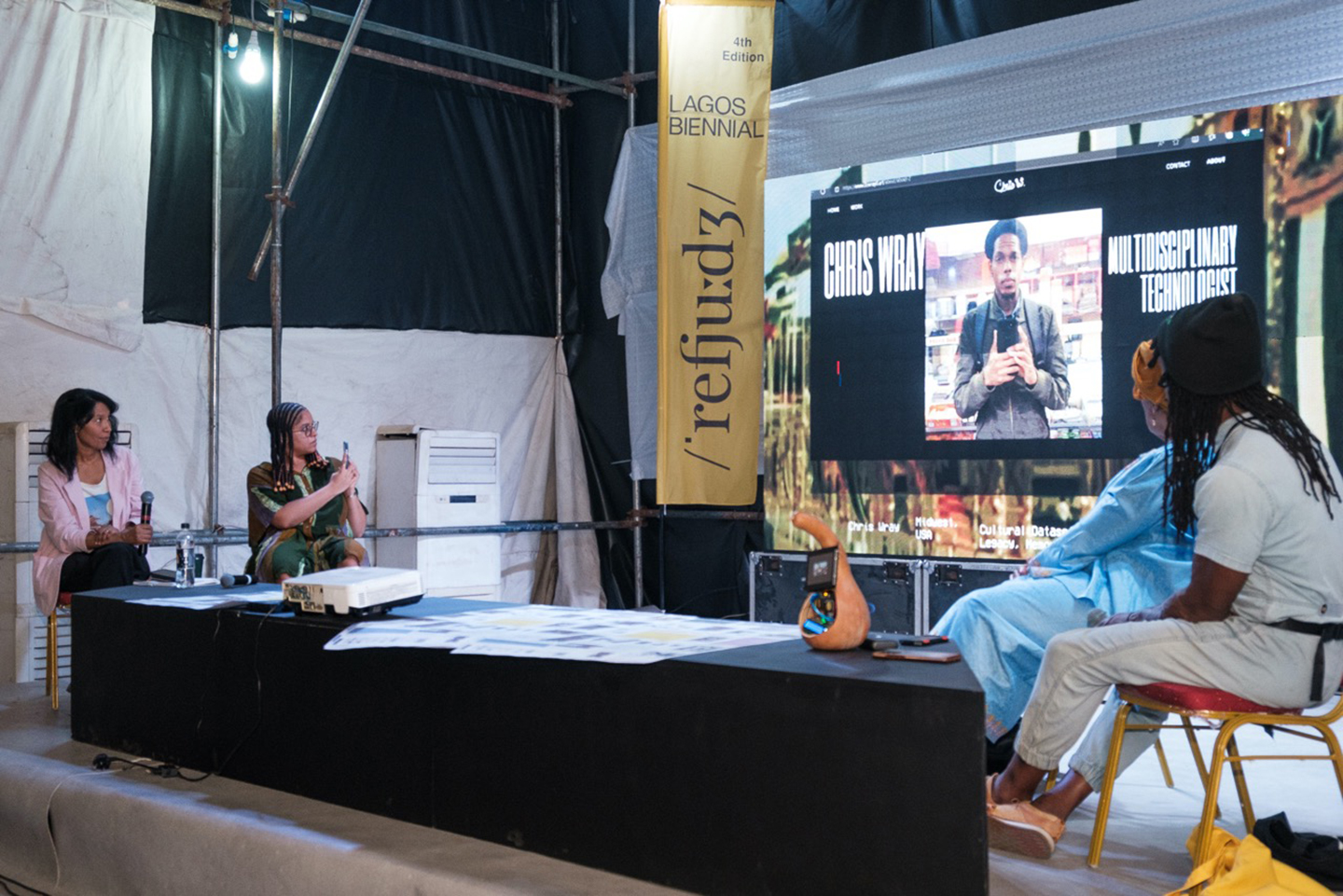
The New Art School Modality at the Lagos Biennial 2024. From left: Romi Crawford, Analise Samantha Delphine Sesay, Darlene Blackburn, and Ryan Tenney. Courtesy of the Lagos Biennial.
As Crawford crafts NASM’s future curriculum, she remains guided by the desire of Black artists and producers to learn and pass on knowledge about overlooked topics. The program's fall 2024 course will convene at Jeffrey Deitch’s New York gallery and focus on funk’s sonic and visual aesthetics, while this spring’s session at the MCA Chicago focuses on making new monuments. “Forging a new set of aesthetic criteria for memorialization is as important as making new structures,” Crawford explained. “The ‘fleeting monuments’ concept and premise of my book was a start, but the goal is to plot a range of fresh concepts that align with the production of new monument works.” As NASM expands ever outward, its founder remains committed to building a pedagogical model that directly involves artists and thinkers from historical grassroots art movements, fostering informal, non-capitalist, cooperative learning models inspired by these forebears.
See →.
Harney and Moten, The Undercommons (Minor Compositions, 2013), 26.
